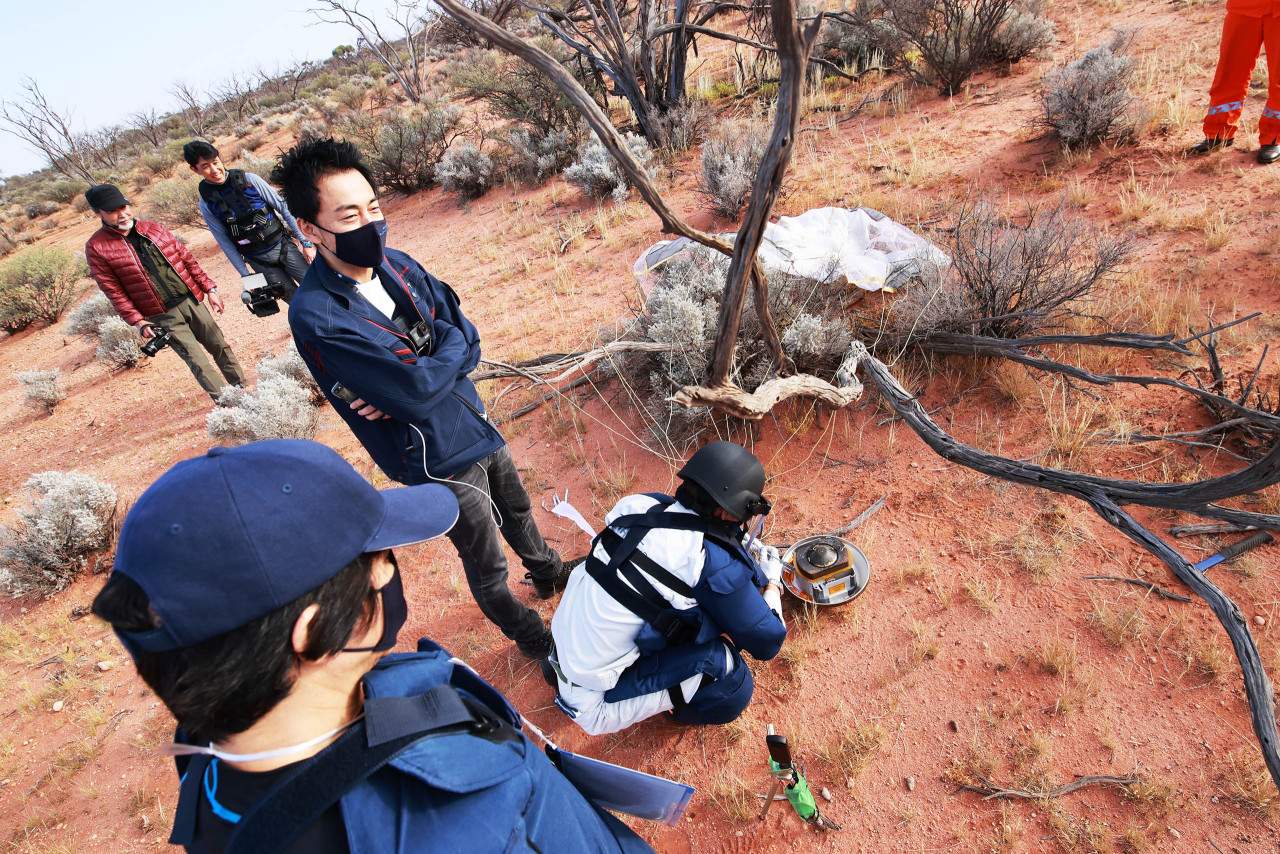On December 6, 2020, Japan Aerospace Exploration Agency (JAXA) has recovered the body of the capsule, the heat shields, and the…










On December 6, 2020, Japan Aerospace Exploration Agency (JAXA) has recovered the body of the capsule, the heat shields, and the parachute of the “Hayabusa2” re-entry capsule in the Woomera Prohibited Area (WPA).
Tomorrow, the capsule recovery team will extract gas out of the capsule at the operation headquarters in Australia. Researchers considered the gas originates from the precious sample from Asteroid Ryugu.
(via https://global.jaxa.jp/projects/sas/hayabusa2/ )
Hayabusa2 will target a C-type asteroid “Ryugu” to study the origin and evolution of the solar system as well as materials for life by leveraging the experience acquired from the Hayabusa mission.
To learn more about the origin and evolution of the solar system, it is important to investigate typical types of asteroids, namely S-, C-, and D-type asteroids. A C-type asteroid, which is a target of Hayabusa2, is a more primordial body than Itokawa, which is an S-type asteroid, and is considered to contain more organic or hydrated minerals – although both S- and C- types have lithologic characteristics. Minerals and seawater which form the Earth as well as materials for life are believed to be strongly connected in the primitive solar nebula in the early solar system, thus we expect to clarify the origin of life by analyzing samples acquired from a primordial celestial body such as a C-type asteroid to study organic matter and water in the solar system and how they coexist while affecting each other.
(via https://global.jaxa.jp/projects/sas/hayabusa2/index.html )